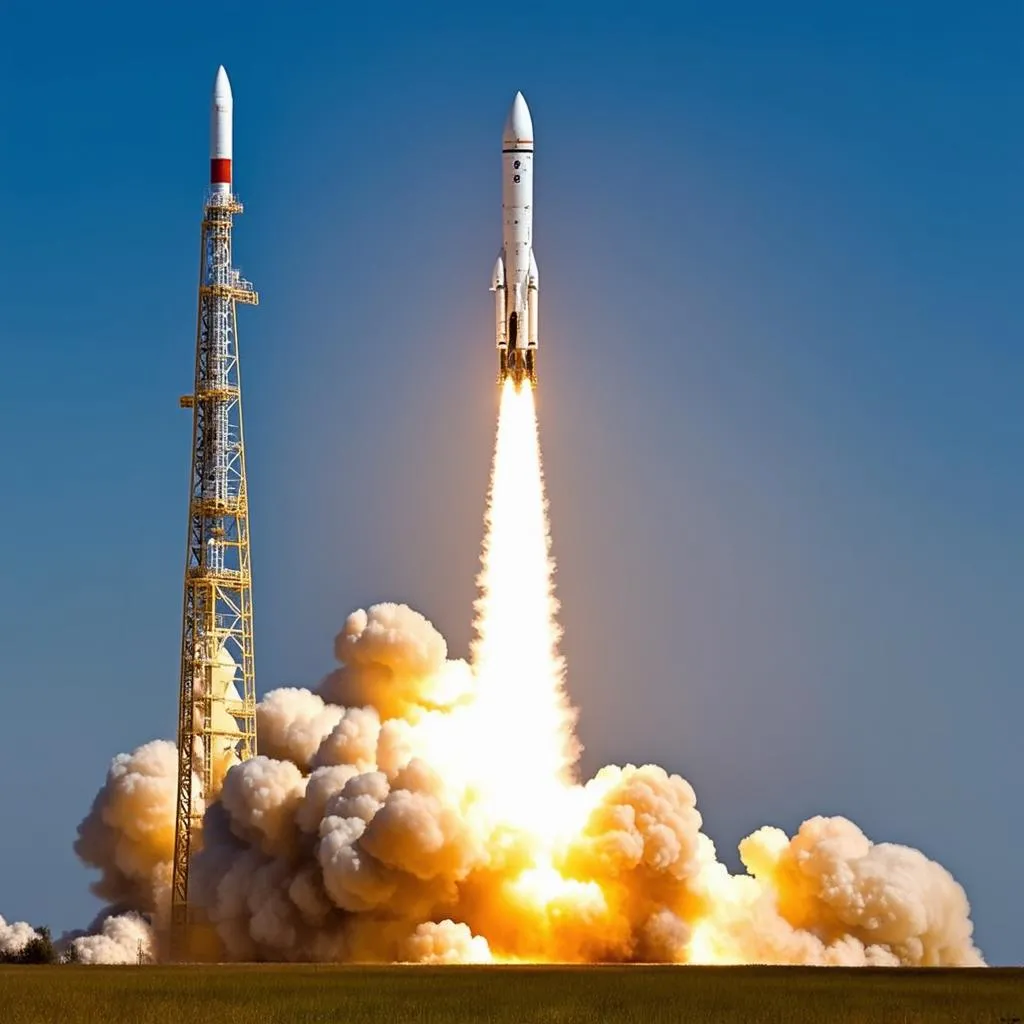Have you ever gazed up at the night sky, stars twinkling like celestial fireflies, and wondered about the vastness beyond? The allure of space travel, once a distant dream, is now a tangible reality. But just how fast do these powerful machines, these rockets that pierce the heavens, actually travel in space?
Breaking Free from Earth’s Grasp: Escape Velocity and Beyond
To escape the clutches of Earth’s gravity and venture into the cosmos, a rocket needs to achieve an astonishing speed – escape velocity. This is the minimum speed required to overcome the gravitational pull of a planet. For our blue planet, that speed is a mind-boggling 25,020 miles per hour (or about 7 miles per second)! Imagine traveling from New York City to Los Angeles in just under 5 minutes!
However, reaching escape velocity is just the beginning. Once a rocket breaks free from Earth’s gravitational grip, its speed can vary greatly depending on its destination and the mission objectives.
Destinations and Velocities: A Cosmic Dance
A rocket’s speed in space is a delicate dance between celestial mechanics, fuel efficiency, and mission goals. For instance:
Orbiting the Earth: A Steady Pace
Satellites, like the ones beaming GPS signals to your phone, need to maintain a specific speed to stay in orbit. The International Space Station (ISS), a marvel of engineering orbiting 250 miles above us, travels at a brisk 17,500 mph. That’s like circling the entire planet every 90 minutes!
Reaching for the Moon: A Lunar Sprint
The Apollo missions, humanity’s first foray onto another celestial body, required rockets to reach speeds of around 25,000 mph to break free from Earth’s gravity and set course for the Moon. The journey took about three days.
Venturing Further: Interplanetary Voyages
Traveling to other planets, like Mars, demands even greater speeds. The journey time is influenced by the positions of Earth and Mars in their orbits, but a typical trip could take around seven months, with speeds exceeding 24,600 mph.
Deep Space Exploration: Reaching for the Stars
Missions like Voyager 1 and 2, humanity’s emissaries to the outer solar system, have achieved incredible speeds exceeding 38,000 mph thanks to gravitational assists from planets like Jupiter.
 Rocket Launch
Rocket Launch
Factors Influencing Rocket Speed: A Delicate Balance
Several factors influence how fast a rocket travels in space:
- Gravity: The most significant factor, as escaping a planet’s gravitational pull requires immense speed.
- Propulsion Systems: The type of engine and fuel efficiency play a crucial role in determining a rocket’s potential speed.
- Mission Objectives: The destination and purpose of the mission dictate the required speed and trajectory.
Beyond Speed: The Future of Space Travel
While speed is crucial, future space travel might focus on innovative propulsion systems, like ion propulsion or even theoretical concepts like warp drives, to achieve even greater speeds and explore the cosmos further.
 Space Travel
Space Travel
Embark on Your Own Journey of Discovery
Space travel is a testament to human ingenuity and our insatiable thirst for knowledge. Want to learn more about the intricacies of space exploration? Check out our article on “How Long to Travel to the Moon” for a deeper dive into lunar voyages.
At Travelcar.edu.vn, we’re passionate about fueling your wanderlust, whether it’s exploring the hidden gems of our planet or venturing into the vast expanse of space. Contact us to plan your next adventure!